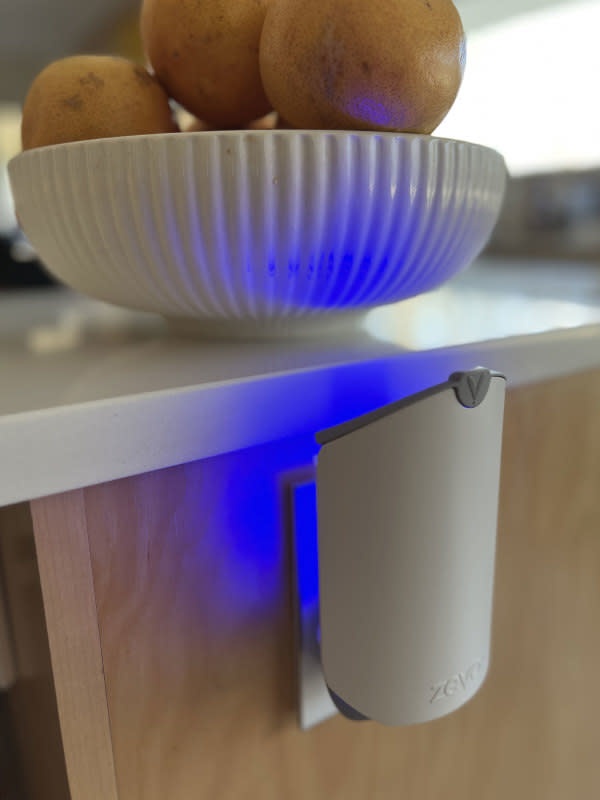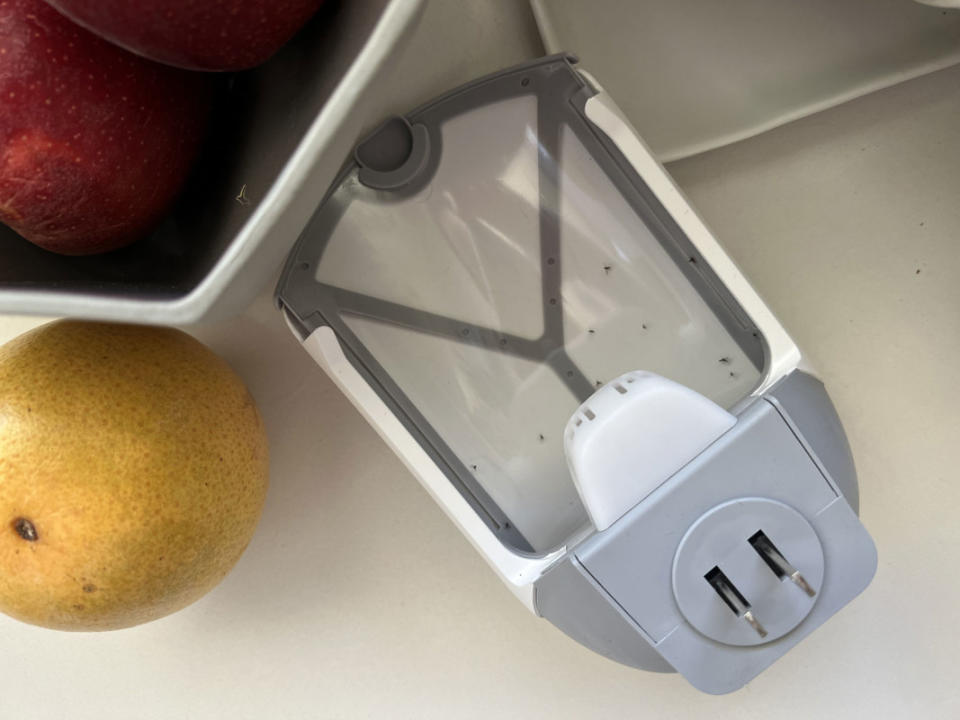How to Catch Fruit Flies and Gnats
Men’s Journal aims to feature only the best products and services. If you buy something via one of our links, we may earn a commission.
Ahh, the sudden influx of insects inside your home. Winter must be ending! As temperatures rise and we spend more time opening windows and going in and out of our home, it's time to level up our bug removal strategies and disrupt their invasion before they disrupt our day-to-day lives. That said, gnats and pesky fruit flies that originate inside our own homes are some of the most determined insects we must combat (and for some of us, it's a year-round battle).
Using Apple Cider Vinegar, Wine, Red Wine Vinegar, or Fruit-Based Liquor
Gnats and flies alike are drawn to the sweetness of these common household liquids. For whatever it's worth, when using a jar trap I find that ACV attracts fruit flies, while gnats prefer red wine. Will a white vinegar trap work? No, it lacks the sweetness of apple cider vinegar.
Pour two tablespoons of the liquid of choice into a small jar or beverage container. The scent attracts fruit flies and gnats. If you're trapping with wine, you can also just leave a small amount in the bottom of your tall wine bottle.
Add a few drops of dish soap, and stir it gently. The liquid dish soap will disperse across the surface of the solution, making it more difficult for trapped insects to fly away. the surface tension of the liquid, causing the insects to sink and drown when they land on it.
Optional: Cover the container. There are a few different approaches that have varying degrees of success: You can use plastic wrap. Some tutorials will recommend that you poke small holes, but I say you should just leave one edge of the container uncovered. They'll find their way in following the smell, but it'll still be hard for them to get back out. You may also want to use a piece of duct tape or sticky paper. Cover most of the top of the container, sticky side down, leaving one edge of the container uncovered. The insects will enter and if they try to reverse course, they're more likely to get stuck on the sticky side. Trying a paper cone? I find that the insects are too confused to navigate the tube and enter the container.
Place this near your countertop fruit bowl, garbage disposal, or compost container. Refresh the apple cider vinegar every 2-3 days.
Using Overripe, Rotten Fruit
I mean, give the insects what they want!
Place overripe fruit in a deep bowl. The more this organic material is on the brink of fermentation, the better.
Mix 1/4 cup of apple cider vinegar and a bit of dish soap in a container. Pour it into the bottom of the bowl.
Cover the bowl with plastic wrap, leaving one edge uncovered as an entry point for the insects.
Place the bowl on your kitchen counter. They will be drawn to the rotten food, but once inside, they'll get disoriented. Eventually, they'll settle into the apple cider vinegar and drown.

Emily Fazio
Using a Blue and UV Light System
In the realm of store-bought traps, plug-in light traps like this one from ZEVO do work well for smaller insects like fruit flies, but I find that the adhesive panel isn't always strong enough for adult fruit flies or gnats. We keep one plugged in next to our fruit bowls, and another next to a houseplant that requires perpetually moist soil (breeds fungus gnats). Taking steps to catch those insects while they're small helps keep our gnat and fruit fly infestations at bay.

Emily Fazio
Bonus: The Fly Swatter You All Need
At the end of the day, there are going to be flies and gnats in your home, no matter how clean your spaces are. Yes, you may have a manual fly swatter for pesky summertime flies, but an electric fly swatter works better for fruit flies and indoor gnats. Keep one one on hand to use in conjunction with a homemade trap and use it around your compost and other food scraps to manage the population.

